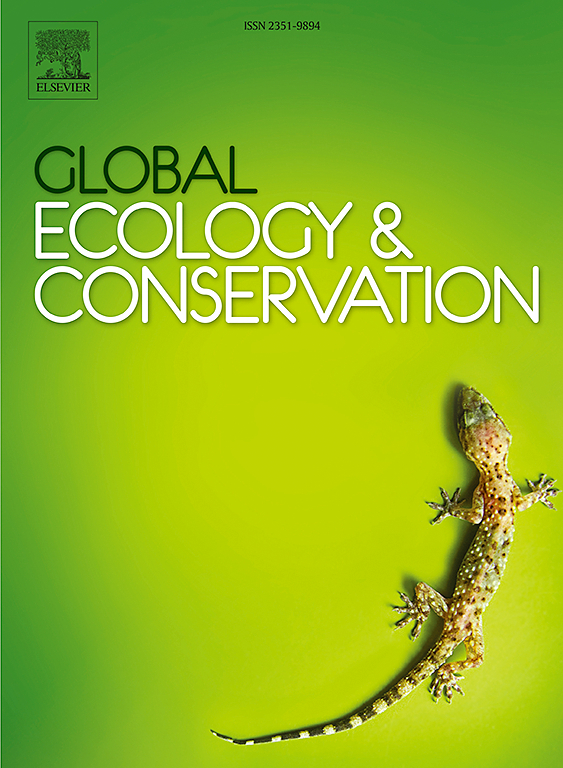How do the body size attributes of marine nematodes indicate the environmental changes in mangroves?
IF 3.5
2区 环境科学与生态学
Q1 BIODIVERSITY CONSERVATION
引用次数: 0
Abstract
Body size is a crucial functional trait of nematodes, which determines the biological and physiological processes and provides more comprehensive information concerning the ecological role of nematodes. To investigate how the body size attributes of marine nematodes indicate the environmental changes in mangroves, we studied the variations in body size and biomass size composition of marine nematodes in a subtropical mangrove ecosystem. The results revealed that median values of body length, width, length-to-width ratio, and individual dry weight were 956.88 μm, 40.98 μm, 22.51, and 0.24 μg, respectively. In summer, adults and juveniles exhibited a predominance of smaller-sized slender individuals, while in winter, large stout individuals were more common. Correspondingly, the biomass size spectra skewed towards smaller-size classes in summer, whereas in winter, they skewed towards larger-size classes. The body size attributes and biomass size composition of nematodes significantly correlated with environmental variables, effectively indicating the environmental changes, especially changes in interstitial water temperature and sediment pheophorbide. The reduction in body size was a prominent response of mangrove nematodes to temperature rise. The total biomass of nematodes and their carbon contribution have been calculated based on body length and width. This document will provide essential information to estimate the carbon stock of nematodes and their contribution to the blue carbon sink in mangrove ecosystems. Analysis based on body size is species-independent and more beneficial for promoting the application of nematodes in environmental implication and monitoring.
求助全文
约1分钟内获得全文
求助全文
来源期刊

Global Ecology and Conservation
Agricultural and Biological Sciences-Ecology, Evolution, Behavior and Systematics
CiteScore
8.10
自引率
5.00%
发文量
346
审稿时长
83 days
期刊介绍:
Global Ecology and Conservation is a peer-reviewed, open-access journal covering all sub-disciplines of ecological and conservation science: from theory to practice, from molecules to ecosystems, from regional to global. The fields covered include: organismal, population, community, and ecosystem ecology; physiological, evolutionary, and behavioral ecology; and conservation science.
 求助内容:
求助内容: 应助结果提醒方式:
应助结果提醒方式:


